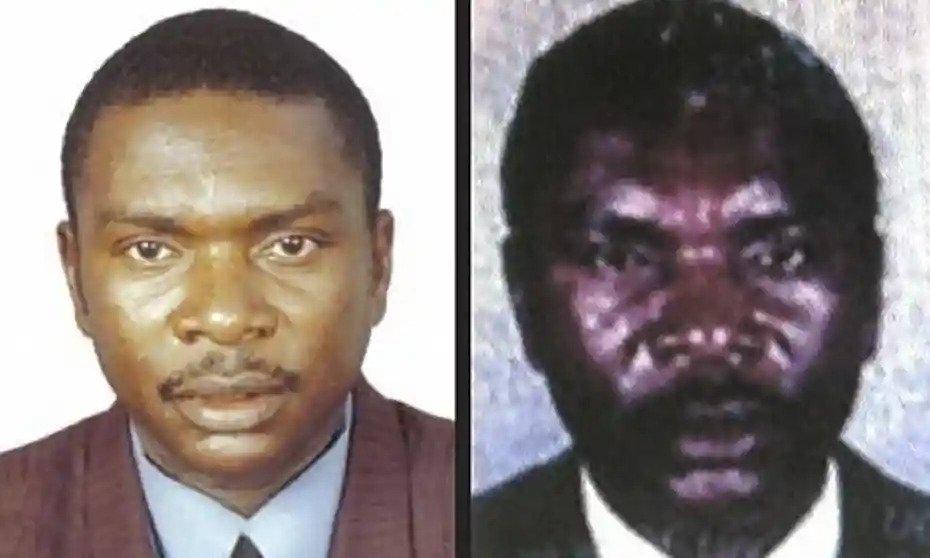Africa-Press – Rwanda. The International Criminal Tribunal for Rwanda (ICTR), on Thursday, May 12, confirmed that top genocide fugitive Protais Mpiranya died on October 5, 2006, in Harare, Zimbabwe.
The development brings to an end a 20-year manhunt for the man who ranks high on the list of the masterminds of the Genocide against the Tutsi.
In 1994, Mpiranya was a commander of the Presidential Guard (PG), an elite military unit that is blamed for the slaughter of top politicians in the immediate aftermath of the death of former President Juvenal Habyarimana on the night of April 6.
In the early hours of April 7, 1994, elements of the PG under the command of Mpiranyi assassinated Prime Minister Agathe Uwilingiyimana, before detaining and murdering ten Belgian peacekeepers who were guarding her residence.
The PG also assassinated Faustin Rucogoza, a member of the Mouvement Démocratique Républicain and Minister of Information, Félicien Ngango, Vice-President of the Parti Social Démocrate (PSD), Landouald Ndasingwa, Vice-Chairman of the Parti Libéral and Minister of Labour and Community Affairs, Joseph Kavaruganda, President of the Constitutional Court, and Fréderic Nzamurambaho, Chairman of the PSD and Minister of Agriculture.
In the days and weeks which followed, the PG collaborated with the Interahamwe militia to murder Tutsi civilians.
Here, PG soldiers erected roadblocks across Kigali to stop and kill Tutsis, and raped Tutsi women and children together with the Interahamwe.
In early July 1994, when the Rwandan Patriotic Front (RPF) took control of Rwanda, Mpiranya, just like a number of other people that had committed genocide crimes fled to DR Congo, which was then called Zaire.
According to information from the ICTR’s investigation, in September 1994, Mpiranya obtained passports for himself and his family, and they travelled to Yaoundé in Cameroon in early October 1994, where many of those responsible for the genocide had sought safe haven.
In March 1996, following the arrest of Théoneste Bagosora in Cameroon, Mpiranya fled before Cameroonian authorities searched his house.
He subsequently travelled between Zaire – soon after renamed the Democratic Republic of Congo (DRC), the Republic of the Congo, the Central African Republic (CAR), and Cameroon, where his family remained.
In 2002, he fled to Zimbabwe, and according to the ICTR, Zimbabwean officials facilitated his entry into the country, and he later ensured the safe passage of his closest associates into Zimbabwe as well.
From 2002 until his death in 2006, Mpiranya lived in Zimbabwe – in an affluent part of the capital Harare, and was able to avoid arrest, and he continued supporting the activities of the Democratic Forces for the Liberation of Rwanda (FDLR), something he had done since fleeing Rwanda.
In the second half of 2006, he fell seriously ill from pulmonary tuberculosis and was admitted to the West End Hospital in Harare under the alias Ndume SAMBAO. He underwent a bilateral pleural effusion in September 2006 but, despite treatment, died on 5 October 2006.
“After his death, Mpiranya’s associates organised his funeral while his wife travelled to Harare from the UK to attend. On 17 October 2006, a private ceremony was held at a funeral home in Harare, attended only by his family and associates. He was subsequently buried in a cemetery outside of Harare under the name Ndume Sambao,” the statement read.
“Since October 2006, Mpiranya’s family and associates have gone to great lengths to conceal his death and place of burial,” it added.
His tombstone was purposefully designed to thwart its discovery as his burial place.
Over the past few years, the ICTR team tracking him faced challenges, but the breakthrough in the investigation came in September last year with the seizure of a computer and other material in a raid in an undisclosed European country.
From the computer, the investigators came across emails with veiled references to “the one who has a passed” and the “old man.”
Then they cross-checked the travel of some of Mpiranya’s relatives, from visa stamps sent by partner governments, and found them converging on Zimbabwe in October 2006.
Sifting through hundreds of digital pictures, they found photos of a funeral including those of the body laid out for the mourners. It looked like Mpiranya and was dressed in a suit that the investigators later found in the grave.
Finally, they found the photo of a hand-drawn picture of a gravestone, sent by a close relative, and realised it was a commission for the stone carvers of Harare. If they could find a stone like that, they could find the body.
After years of stalling the search, the Zimbabwean authorities agreed to allow the body of the man calling himself Sambao Ndume to be dug up. On 27 April, the trackers, a UN pathologist, and three Zimbabwean detectives gathered at the grave as the sun rose.
His body was exhumed last month at the request of UN investigators, and Mpiranya’s identity was confirmed by DNA analysis this week.
Mpiranya is the last of the major fugitives indicted by the ICTR, others being Augustin Bizimana, who was confirmed dead in 2020, and Félicien Kabuga who was arrested in Paris the same year.
He was one of the subjects of the US Reward for Justice Programme, with a US$5 million bounty on his head.
For More News And Analysis About Rwanda Follow Africa-Press






